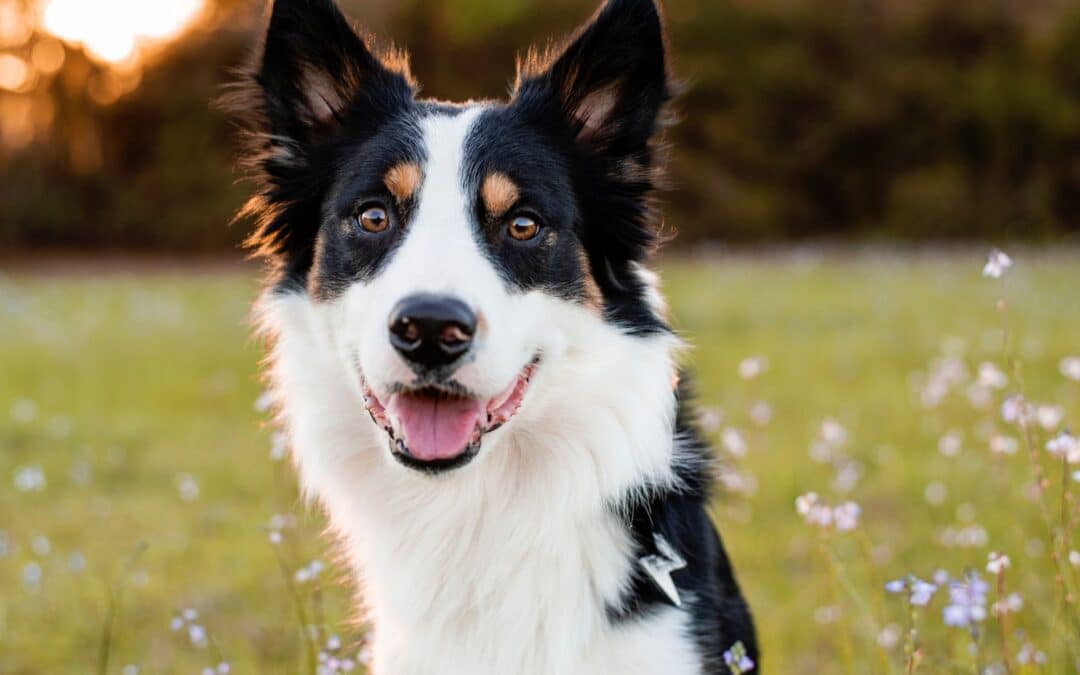Discover Top Velcro Dog Breeds: Tips for Clingy Pet Parents
Ah, the dog-eared definition of ‘Velcro dogs’, is a term that holds both figuratively and literally. Have you ever wondered why your four-legged friend can’t get enough of your side? Well, you, my friend, might have a ‘Velcro dog,’ a sweet expression coined to describe those adorable pups that stick by your side just like, you guessed it, Velcro! These clingy canines love personal space – yours, to be precise, driving a furry wedge between you and your much-needed solitude. They’re like your adorable, curly-headed toddlers with a wet nose and wagging tail!
Welcome to an article that celebrates the love, attachment, and sometimes annoyance of cohabiting with Velcro dogs. Why Velcro? Because just like the fasteners in your kid’s shoes, these dog breeds latch onto their human counterparts, refusing to budge! It may have been born out of evolutionary advantages, a survival instinct, or a product of selective breeding. But one common thread? Their need for closeness is as constant as a plucky tail wag. So brace up and get ready to dive into the drooly depths of Velcro dog breeds, exploring their behaviors, traits, and everything you need to know as a clingy pet parent.
Being a pet parent to Velcro dogs is much akin to that feeling of peeling sticky candy off wool – rewarding, yes, but equally demanding. If you’re looking for tips on handling this beautiful clingy-chaos, we’ve got your back. From understanding their need for constant paw-on-leg contact to finding the perfect balance between meeting their needs and preserving your personal space, we’ve got it all laid out! And trust us, once you’ve stooped to pick the fuzz, there’s no going back, and no other love quite compares! Let’s un-velcro the mysteries, shall we? Next stop: ‘What Attributes Define a Velcro Dog?’ Your curiosity-piqued guide awaits!
Which Dog Breeds Commonly Show Velcro Dog Behavior?

Raise your paws if you ever heard of the term Velcro Dog Breeds. These adorable canines hold an unbeatable record for their tail-waggingly intense affection towards their owners. This level of attachment often translates into behaviors where these pooches are always ‘stuck’ to their parents, much like a piece of Velcro. Let’s dive into a detailed exploration of these breeds that come with their built-in buddy systems.
Italian Greyhounds, Golden Retrievers, and Pugs are the top breeds generally known to exhibit Velcro behavior. Other breeds, such as the Labrador Retriever, Australian Shepherd, and Chihuahuas, also share this characteristic love trait.
The Italian Greyhounds, small, slender, and possessing an athletic build, are known for their distinctive Velcro tendency. This breed was initially bred for companionship, which explains their overly attached behavior. On the other hand, Golden Retrievers are universally loved for their friendly and tolerant attitudes. Known to suffer from separation anxiety, these fun-loving dogs need lots of interaction and exercise to keep their spirits high. Pugs, the small, sociable, and downright clownish dogs, are also among the notable Velcro breeds that tend to follow their owners everywhere.
The Velcro-induced behavior may not solely be a matter of breed traits; a dog’s environment and upbringing can significantly influence its attachment levels. Hence, while these breeds are likelier to display clingy behavior, it’s not guaranteed.
How Can You Recognize if Your Dog Is a Velcro Dog?
Recognizing the signs of excessive dog clinginess can help ensure your pet’s well-being. If you observe your furry friend consistently following you around, showing signs of distress when you are not around, or having difficulty settling down when left alone, your pup might be a Velcro dog.
These signs typically denote an overly attached or Velcro dog behavior, which differs from most dogs’ normal attachment levels. While it’s healthy (and adorable) for puppies to want to stay by their owner’s side, excessive clinginess can disrupt their canine well-being, causing undue stress and anxiety.
Suppose your dog’s clinginess manifests in a way that affects their health or behavior, such as causing significant distress when you are not around or extreme panic upon your departure. In that case, consult a trained professional like a certified animal behaviorist.
Having a Velcro dog can be endearing. But remember, every dog needs to be able to function independently. Overly dependent dogs may lack confidence or feel anxious when alone. As responsible pet parents, it’s vital to strike a balance and help dogs manage their emotions. Understanding your dog’s behavior is the first step towards fostering a healthy pet-owner relationship, meeting their needs, and ensuring their happiness under your roof.
Stay tuned as we smoothly transition into the next topic, “How Can You Manage and Care for a Velcro Dog Effectively?” to provide more tips on caring for your Velcro canine!
How Can You Manage and Care for a Velcro Dog Effectively?

Experts define Velcro dog breeds as breeds that stick close to their owners at all times, almost as if they’re glued to their humans’ sides like Velcro. They find comfort in being near their owners and often experience separation anxiety when apart. But fear not, managing and caring for Velcro dogs is not as tough as it sounds. The right approach can manage their sometimes-neediness and clingy behavior effectively.
Ways to Effectively Handle and Care for These Breeds
Being the parent of Velcro dogs requires developing a deep understanding of these breeds, fostering their independence, yet providing the requisite comforting touch. One of the proven approaches includes gradually increasing this distance over time to help your furry friend adjust to your occasional absence. You can start by leaving your dog for a few minutes daily and then gradually increasing the duration.
Consistent training is another effective way to care for Velcro dogs. Reward-based training techniques establish good behavior by directly linking obeying commands and earning rewards. This tactic can help reduce their anxiety and modify clingy behavior, ensuring their comfort and happiness.
Can a Velcro Dog be Trained to be Less Clingy?
Indeed, training is crucial for managing Velcro dogs. Using certain techniques can help reduce their clingy behavior. By positively reinforcing your dog’s independence, you can train them to be less reliant on you.
Case studies from dog behaviorists have successfully trained Velcro dogs. They have helped reshape these dogs’ behavior, transforming unnecessary clinginess into sociable, balanced behavior.
However, it’s important to remember every dog is unique. What works for one may not necessarily work for all. This is where expert dog advice proves valuable. Renowned dog trainers suggest balancing comforting your pet and fostering independence. It’s critical not to discourage their need to be close but also to build their capacity to cope alone.
Tackling Their Neediness and Anxiety Issues
Their intense attachment to their human often triggers the neediness and anxiety of Velcro dog breeds. Therefore, providing mental and physical stimulation can help keep their mind and body occupied, reducing the severity of these symptoms. A tired dog is a calm dog. Regular physical exercise and mental stimulation through games can keep your clingy buddy busy and less anxious when you’re not around.
Furthermore, encouraging them to spend time with other dogs can boost their confidence. Social interactions make them emotionally stronger and contribute to their overall well-being.
In conclusion, managing and caring for Velcro dogs involves a consistent and patient approach. Though they require more attention than other breeds, the affection and loyalty they offer make it well worth it. As we proceed, we’ll explore some prevalent health issues that you should know as a Velcro dog parent. Stay tuned!
What are Some Prevalent Health Issues for Velcro Dogs?

First, a Velcro dog is a special term coined to characterize breeds with exceptional attachment levels, relying significantly on their human companions. Adorable as it might sound, this dependence might not always translate to good health. Some common *health issues* experienced by these clingy pals include separation anxiety, obesity due to limited exercise, and mental health problems.
Understanding the influence of canine genetics on a dog’s health is crucial. Certain breeds, such as Poodles, Bichon Frises, and Italian Greyhounds, are predisposed to become Velcro dogs due to their historical roles as companions. As such, our cuddly companions may be susceptible to various genetically influenced health issues like hip dysplasia, skin problems, or eye disorders. PetMDis is a great resource to learn more about breed-specific health issues and corresponding preventive measures.
Regular vet check-ups are indispensable to be on top of a Velcro dog’s health care. These periodic assessments not only keep them in good shape physically but mentally, too. Regular interaction with veterinarians can help reduce anxiety often associated with such visits, promoting a healthier mindset for your clingy friend.
An appropriate diet should not be overlooked and is vital for maintaining good health in Velcro dogs. Since these breeds often suffer from obesity due to their lackadaisical lifestyle and excessive eating habits, sticking to a portion-controlled diet is vital. Keep those treats limited and ensure they’re getting food rich in protein and nutrients.
Do Velcro Dogs Require Specific Toys or Accessories?
To mitigate clingy behavior and ensure these dogs have ample mental stimulation, a requirement for specific toys or accessories could be beneficial. Since we’ve mentioned that they could get anxious and separated from their humans, engaging toys can distract them, reducing their dependence on your presence.
Interactive toys that stimulate their senses, trigger their curiosity, and tap their intelligence can hold their attention for a prolonged period. Puzzle games, treat dispensing toys, and toys that allow for physical engagement, like tug ropes and balls, are popular choices. Favorite and highly rated products like the Kong Classic Dog Toy or Outward Hound Hide-A-Squirrel Puzzle Toy could make playtime more entertaining and satisfying for your Velcro pup.
These toys and accessories play a significant role in controlling their behavior by providing an outlet for their mental and physical energy. Additionally, using such objects helps curb anxiety; a quiet time with their favorite toy can be a soothing experience that makes them feel safe and secure.
In summary, bearing in mind the common health issues for Velcro dogs traced back to their genetic predisposition, following a regular health care regimen and providing stimulating dog toys can contribute to a healthier and happier life for these lovable companions.
Treat your Velcro companion like the special breed they are with plenty of affection, proper healthcare, and enriching playtime accessories. If you’ve considered adding one to your family, you’re ready to move on to our next topic: ## Practical Tips for First-Time Velcro Dog Owners. Brace for a roller coaster of joy and learn to navigate the challenges of welcoming such a loving and irresistibly clingy pal into your home.
Conclusion
After diving into this comprehensive guide, we know you have already fallen for those affable Velcro dog breeds. With their irresistible need for constant companionship, these heart-melting companions make an ideal choice for those yearning for an inseparable bond with a furry friend. What makes them stand out is their absolute devotion and attachment to their human buddies, embedding an exceptional sense of comfort, joy, and love in their pet parents’ lives.
Imagine an enriching bond spiced with furry cuddles, shared moments, and adorable “I-can’t-let-you-go” looks. Isn’t that something to look forward to in the hustle and bustle of life? However, like all good things, being a pet parent to Velcro breeds comes with responsibilities. It becomes crucial to understand their needs, pay attention to their moods, respect their space, and, most importantly, shower them with the love they so passionately crave.
So, all dog lovers out there, take a moment to assess your lifestyle and ask yourself – Are you ready to handle the love-filled, clingy corner accompanying these breeds? By being patient, loving, and understanding, rest assured, you can make an excellent pet parent to a Velcro dog.
Remember, adopting a dog means bringing home not just a pet but a life-long companion and family member. So, dear future pet parents, take this plunge only if you’re ready to reciprocate the incredible amount of endearment and loyalty these Velcro dog breeds offer. Dive in; a beautiful bonding journey is waiting for you!
Isn’t it time you experienced the joys of pet parenting?
Frequently Asked Questions about Velcro Dog Breeds
What are Velcro dog breeds?
Velcro dog breeds are named as such because they tend to be close or “stuck” to their owners, much like Velcro. They require much attention and affection from their family and can experience separation anxiety if left alone for long periods. Some popular Velcro dog breeds include the Labrador Retriever, Golden Retriever, and the Bichon Frise.
Are all dog breeds classified as Velcro dogs?
No, not all dog breeds are classified as Velcro dogs. Various breeds have different temperaments and needs. Some dogs are independent and require less attention and interaction, while others thrive best when near their humans frequently.
What is the most common Velcro dog breed?
The most common Velcro dog breeds include the Labrador Retriever, Golden Retriever, Border Collie, and German Shepherd. These breeds need lots of attention and enjoy spending time with their families.
Why are dogs called Velcro dogs?
They are called Velcro dogs because, much like the properties of Velcro – sticking closely to the surface it touches – these dogs love being very close to their owners, almost as if they are attached.
Do Velcro dogs have more separation anxiety than other breeds?
Velcro dogs have a higher predisposition to suffer from separation anxiety due to their strong attachment to their owners. However, not every Velcro dog will develop these issues, and with proper training and gradual conditioning, they can be managed effectively.
Are Velcro Dogs hard to train?
Velcro dogs aren’t any harder to train than other dogs. These breeds often excel in training due to their high intelligence and desire to please their owners. Like any dog, they need consistent, positive reinforcement training methods.
Can you leave a Velcro Dog alone?
Leaving a Velcro dog alone for long periods can cause them stress and anxiety. If you need to leave your Velcro dog alone, provide plenty of activities and toys to entertain them or hire a dog walker. Furthermore, gradually build up the time you leave them alone so they acclimate to your absence.
Are Velcro dogs good for first-time owners?
Whether a Velcro dog suits a first-time owner depends on the owners themselves. A Velcro breed might be a good match if a first-time dog owner has much time to dedicate to their dog. These breeds are often very affectionate, intelligent, and eager to please
How to manage a Velcro dog’s clinginess?
Training your dog to get accustomed to being alone, providing plenty of physical and mental stimulation, and creating a comfortable and safe space to retreat to alone can help manage a Velcro dog’s clinginess.
Can a puppy be trained not to become a Velcro dog?
While it’s not outright possible to train instincts out of a dog, your puppy can be conditioned to handle separation well. This entails gradually increasing periods of being apart and teaching them that being alone can be a positive experience.





Recent Comments